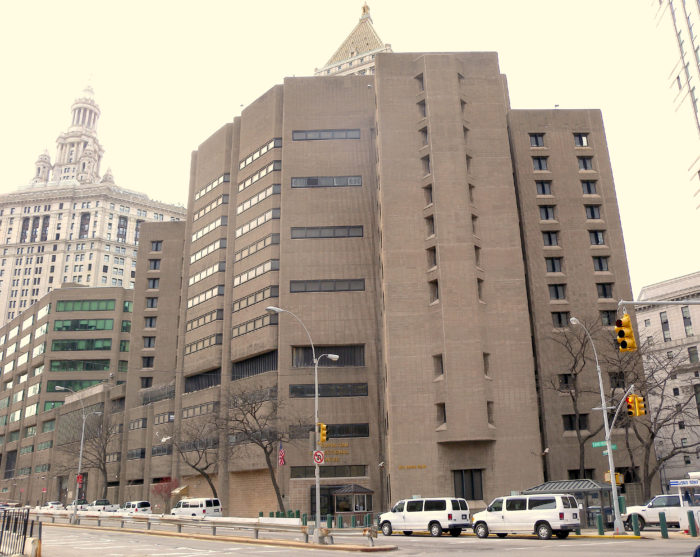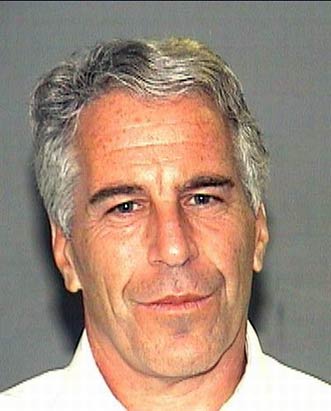JOHN KIRIAKOU: How a Suicide Watch Really Works
If Jeffrey Epstein’s death turns out to have been self-inflicted, it would represent a complete breakdown in the system that was supposed to protect him.
Special to Consortium News
 A cottage industry has been spawned over the past week for the chattering classes on every network to comment on the apparent suicide of Jeffrey Epstein, the millionaire financier charged with sex-trafficking of underage girls.
A cottage industry has been spawned over the past week for the chattering classes on every network to comment on the apparent suicide of Jeffrey Epstein, the millionaire financier charged with sex-trafficking of underage girls.
The talking heads have also babbled on about the inner workings of federal prisons. Nearly every word I’ve heard is either factually incorrect, out of context, or fantastical. I spent 23 months in a federal penitentiary and served on suicide watch over a fellow inmate. So I can set the record straight about how suicide watches work in federal prisons, and about the conditions that led Epstein, apparently, to take his own life. If Epstein’s death turns out to have been an actual suicide, it would be the result of a complete breakdown in the system that was supposed to protect him.
First, suicide watch in the federal prison system is a big deal. When a prisoner is suicidal, or has attempted suicide, he is placed in a designated “suicide watch room.” It is a physical room in the medical unit where one wall is a window. The prisoner is stripped naked and given a paper smock to wear. There are no sheets or pillowcases on the bed. So the prisoner doesn’t harm himself, there is nothing else inside the room other than a sink and a toilet. Outside that window wall, a rotating shift of prisoner volunteers sits 24 hours a day to watch the prisoner to make sure he doesn’t attempt suicide again. There are also video cameras inside the room to ensure the prisoner does not try to harm himself. Uniformed guards check on the prisoner every 30 minutes, and a nurse, physician’s assistant, or psychologist visits the prisoner at least once a day.

NYC prison where Jeffrey Epstein was found dead.
(Jim Henderson, CC0, Wikimedia Commons)
(Jim Henderson, CC0, Wikimedia Commons)
When the prisoner is released from suicide watch, which usually takes a week or two, one of two things happen: Either the prisoner is returned to his cell, where he normally has between one and five cellmates, or he is sent to solitary confinement, where he can be watched more closely than he could be watched in the general population. In most prisons, solitary confinement is not at all solitary. Solitary confinement is usually grossly overcrowded with two or even three prisoners in each cell built for one. One prisoner is in a bunk and the other one or two sleep on mats on the floor. Depending on the prison, guards patrol the unit every 15 or 30 minutes to make sure than nothing untoward is taking place. And don’t forget that there are security cameras that cover literally every inch of a prison every minute of every day. At least, there are supposed to be.
Many Mistakes
So how did Epstein kill himself, if that’s what happened? Every safeguard at every turn had to fail. First, we know that Epstein was not on suicide watch. He had been removed, despite the fact that he had only recently attempted suicide. That was a mistake.
We know also that Epstein was returned to a two-man cell and that his cellmate had been transferred to another prison, leaving him alone there. That was a mistake.
We know that two of the three guards who were responsible for watching Epstein were not trained corrections officers. The prison was short staffed — most are — and two of the three guards were actually supposed to be assigned elsewhere in the prison. (Secretaries, nurses, even the dentist and the chaplain sometimes pitch in when there aren’t enough guards.) That was a mistake.
Two of the three guards also were exhausted. One had worked overtime five days in a row and another was working mandatory overtime. That was a mistake. The guards were supposed to make rounds every 30 minutes to make sure that everything was in order and no prisoners were in danger. They didn’t do that. That was yet another mistake.

Mug shot of Jeffrey Epstein taken in 2006 following his indictment for soliciting prostitution from underage girls. (Wikimedia Commons)
None of these observations answers the question of whether Epstein actually committed suicide. It appears that he did. But, let’s not forget that in any prison in America, sex offenders — and especially those who sexually assault children — are the lowest of the low. Their lives are always in danger. I can tell you a hundred stories of assaults on pedophiles that I observed from my time at the Federal Correctional Institution at Loretto, Pennsylvania.
One of the reasons that almost all pedophiles are kept in low-security prisons is that they’re so much more likely to be assaulted or even murdered in higher-security facilities and they’re not eligible to be placed in minimum-security work camps because of the gravity of their crimes. The Metropolitan Correctional Center in Manhattan, however, where Epstein was awaiting trial, is a maximum-security facility because it’s a transportation center. Almost every prisoner there is awaiting trial and will eventually be sent somewhere else. Epstein was likely a marked man from the minute he walked through the door.
I don’t know if Epstein committed suicide. When we have to choose between incompetence and conspiracy, I usually go with incompetence, though there are many powerful people who were in Epstein’s circle who would not have wanted facts to emerge at his trial. One cannot rule out that all these mistakes made could have been intentional to create the conditions for him to attempt suicide again—this time successfully.
One of my attorneys gave me some advice before I left for prison. “Don’t make anybody angry,” he said. “Most prisoners are attached to one gang or another — the Italians, the Aryans, the Crips and the Bloods, MS-13, the Mexican drug gangs. Every one of them has a long arm and they can reach into any prison in the country.”
John Kiriakou is a former CIA counterterrorism officer and a former senior investigator with the Senate Foreign Relations Committee. John became the sixth whistleblower indicted by the Obama administration under the Espionage Act — a law designed to punish spies. He served 23 months in prison as a result of his attempts to oppose the Bush administration’s torture program.



Geen opmerkingen:
Een reactie posten